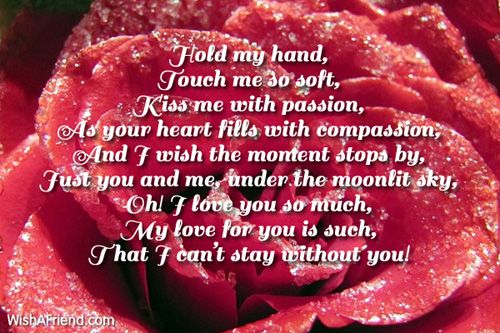Crazy in Love: Exploring the Depths of Passion

Love, in its myriad forms and expressions, has been a subject of fascination and exploration throughout human history. One of the most captivating facets of love is the concept of being “crazy in love.” This phrase evokes intense emotions, irrational actions, and a deep-seated passion that often defies reason. From literature to psychology, from music to personal anecdotes, the phenomenon of being “crazy in love” has been analyzed, romanticized, and debated. In this article, we delve into what it means to be crazy in love, its psychological underpinnings, cultural interpretations, and the impact it has on individuals and relationships.
Table of Contents
ToggleDefining “Crazy in Love”
The term “crazy in love” suggests a state of intense emotional attachment and infatuation towards another person. It goes beyond mere affection or attraction, encompassing obsessive thoughts, overwhelming feelings of longing, and a sense of euphoria when in the presence of the loved one. Psychologically, this state can be likened to limerence, a term coined by psychologist Dorothy Tennov to describe an intense romantic infatuation characterized by intrusive thinking and heightened emotional responses.
Psychological Insights
From a psychological standpoint, being crazy in love can be attributed to several factors:
- Neurochemistry: The brain releases chemicals such as dopamine, serotonin, and oxytocin when individuals experience love, contributing to feelings of pleasure, bonding, and attachment.
- Attachment Styles: Attachment theory proposes that our early relationships with caregivers influence our adult relationships. Individuals with anxious attachment styles may be more prone to becoming intensely infatuated or “crazy in love.”
- Idealization: During the initial stages of a relationship, partners often idealize each other, focusing on positive qualities and ignoring potential flaws. This idealization can contribute to the intensity of being crazy in love.
Cultural and Artistic Representations
The concept of being crazy in love has been romanticized in literature, film, and music across cultures. From Shakespeare’s Romeo and Juliet to contemporary pop songs, artists have captured the ecstasy and agony of intense romantic passion. Cultural norms and societal expectations also play a role in shaping how individuals perceive and express their love.
Impact on Individuals
While being crazy in love can be exhilarating, it can also have profound effects on individuals:
- Behavioral Changes: People may exhibit impulsive behavior, such as grand gestures or risky decisions, driven by their intense emotions.
- Emotional Rollercoaster: The highs and lows of being crazy in love can lead to emotional volatility and mood swings.
- Identity Fusion: In some cases, individuals may experience a blurring of their own identity with that of their partner, known as identity fusion, which can impact decision-making and sense of self.
Relationships and Longevity
The intensity of being crazy in love often diminishes over time as relationships mature. Sustainable love requires mutual respect, trust, and compatibility beyond initial infatuation. Research suggests that relationships characterized by mutual understanding and shared values are more likely to endure in the long run.
Challenges and Risks
While being crazy in love is celebrated in art and culture, it also poses certain risks:
- Codependency: Intense emotional dependence on a partner can lead to codependent behaviors and unhealthy relationship dynamics.
- Unrealistic Expectations: Idealizing a partner can create unrealistic expectations, leading to disappointment when they fail to meet these ideals.
- Jealousy and Possessiveness: Intense passion can sometimes manifest as jealousy or possessiveness, which can strain relationships.
Evolutionary Perspective
From an evolutionary standpoint, being crazy in love may have served as a mechanism to promote pair bonding and ensure reproductive success. The intense emotions associated with romantic love may have facilitated the formation of stable partnerships in ancestral human societies.
Gender and Cultural Variations
The expression of being crazy in love can vary across genders and cultural contexts. Cultural norms and gender roles influence how individuals express their emotions and navigate relationships. For example, some cultures may place a greater emphasis on duty and commitment rather than romantic passion.
Coping with Intensity
Navigating the intensity of being crazy in love requires self-awareness and emotional regulation. Strategies such as mindfulness, communication skills, and maintaining a balanced sense of self can help individuals manage their emotions and maintain healthy relationships.
Conclusion
In conclusion, being crazy in love encompasses a spectrum of intense emotions, behaviors, and experiences that defy easy explanation. From its psychological underpinnings to its cultural and artistic representations, this phenomenon continues to captivate and intrigue. While the initial rush of infatuation can be exhilarating, sustainable love requires mutual respect, understanding, and compatibility. By understanding the complexities of being crazy in love, individuals can navigate their relationships with greater awareness and emotional resilience, ensuring that love remains a source of joy and fulfillment in their lives.
Love, in all its forms, remains one of the most profound and enduring aspects of the human experience. Whether one is experiencing the euphoria of being crazy in love or the comfort of a longstanding partnership, the journey of love continues to inspire, challenge, and enrich our lives.
3.5









